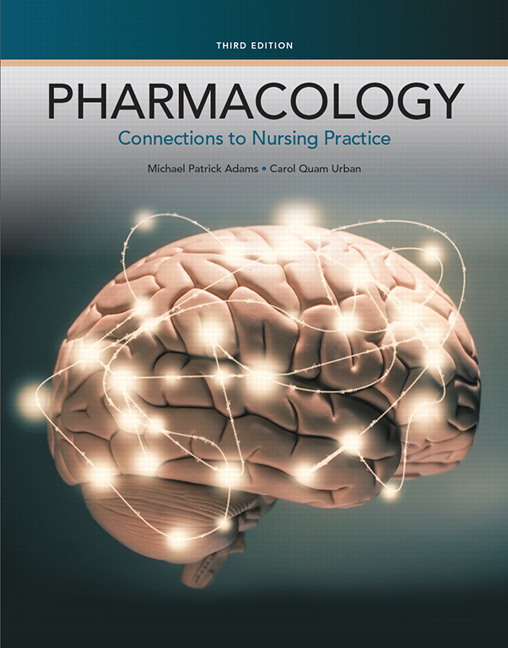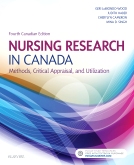Test Bank For Pharmacology Connections to Nursing Practice 3rd Edition By Adams
Original price was: $65.00.$19.50Current price is: $19.50.
Test Bank For Pharmacology Connections To Nursing Practice 3rd Edition By Adams is an essential resource for any nursing student. This book provides a clear and concise overview of pharmacology, with a focus on how it relates to nursing practice. The Test Bank includes over 1,000 questions and answers, covering all major topics in pharmacology.
In addition, the Test Bank includes a complete review of the major drug groups, as well as a section on assessment and management of clients on medication therapy. Whether you are preparing for exams or simply want to brush up on your knowledge, the Test Bank For Pharmacology Connections To Nursing Practice 3rd Edition By Adams is an essential resource.
Digital item No Waiting Time Instant Download
ISBN-10: 0133923614 ISBN-13: 9780133923612
Description
Test Bank For Pharmacology Connections to Nursing Practice 3rd Edition By Adams
Adams and Urban, Pharmacology: Connections to Nursing Practice, 3e Test Bank
Chapter 1
Question 1
Type: MCMA
The nurse is teaching a pharmacology class to a group of student nurses. Which key events does the nurse include in the history of pharmacology?
Note: Credit will be given only if all correct choices and no incorrect choices are selected.
Standard Text: Select all that apply.
1. Early researchers used themselves and animals as test subjects.
2. Pharmacologists began to synthesize drugs in the laboratory in the 20th century.
3. Modern pharmacology began in the mid-1600s.
4. The first drugs included morphine, cocaine, and penicillin.
5. The Dark Ages provided much useful information that we still use today.
Correct Answer: 1,2
Rationale 1: Early researchers did use themselves and animals as test subjects.
Rationale 2: Pharmacologists did begin to synthesize drugs in the laboratory in the 20th century.
Rationale 3: Modern pharmacology began in the 1800s, not 1600s.
Rationale 4: The first drugs included morphine and cocaine, but not penicillin.
Rationale 5: Little is known about pharmacology during the Dark Ages.
Global Rationale: The nurse would state that early researchers did use themselves and animals as test subjects; pharmacologists did begin to synthesize drugs in the laboratory in the 20th century; and modern pharmacology began in the 1800s, not 1600s. The first drugs included morphine and cocaine, but not penicillin. Little is known about pharmacology during the Dark Ages.
Cognitive Level: Applying
Client Need: Physiological Integrity
Client Need Sub: Pharmacological and Parenteral Therapies
QSEN Competencies: III.A.1 Demonstrate knowledge of basic scientific methods and processes
AACN Essential Competencies: IX. 3. Implement holistic, patient-centered care that reflects an understanding of human growth and development, pathophysiology, pharmacology, medical management and nursing management across the health-illness continuum, across lifespan, and in all healthcare settings
NLN Competencies: Relationship Centered Care: Learn cooperatively, facilitate the learning of others.
Nursing/Integrated Concepts: Nursing Process: Implementation
Learning Outcome: 1-1 Identify key events in the history of pharmacology.1
MNL Learning Outcome: 1.1.1 Apply basic concepts related to pharmacology.
Page Number:
Question 2
Type: MCSA
Although all areas of medicine, including pharmacology, have made great advances in the last century, the early roots of pharmacology still apply for the nurse and other health professionals. What were the early roots of pharmacology?
1. Applying products to relieve human suffering
2. Creating new drugs as quickly as possible
3. Finding medicinal alternatives to plants
4. Understanding how drugs take their effects
Correct Answer: 1
Rationale 1: The early root of pharmacology was to relieve human suffering.
Rationale 2: The early root of pharmacology was not to create new drugs quickly.
Rationale 3: Early pharmacology involved using plants to relieve symptoms of suffering.
Rationale 4: The early root of pharmacology was not to understand how drugs take their effects.
Global Rationale: The early root of pharmacology was to relieve human suffering, not to create new drugs quickly or to understand how drugs take their effects. Early pharmacology did involve using plants to relieve symptoms of suffering.
Cognitive Level: Remembering
Client Need: Physiological Integrity
Client Need Sub: Pharmacological and Parenteral Therapies
QSEN Competencies: III.A.1 Demonstrate knowledge of basic scientific methods and processes
AACN Essential Competencies: IX. 3. Implement holistic, patient-centered care that reflects an understanding of human growth and development, pathophysiology, pharmacology, medical management and nursing management across the health-illness continuum, across lifespan, and in all healthcare settings
NLN Competencies: Relationship Centered Care: Learn cooperatively, facilitate the learning of others.
Nursing/Integrated Concepts: Nursing Process: Implementation
Learning Outcome: 1-1 Identify key events in the history of pharmacology.
MNL Learning Outcome: 1.1.1 Apply basic concepts related to pharmacology.
Page Number:
Question 3
Type: MCSA
Although many substances can be considered drugs, which drug definition is the most appropriate?
1. Any substance that is found in nature or that normally occurs in the body
2. Any substance that is synthesized and tested in the laboratory setting
3. Any substance that is taken to prevent, cure, or reduce symptoms of a medical condition
4. Any substance that can be isolated from natural substances in nature
Correct Answer: 3
Rationale 1: A drug is not a substance that is found in nature or that normally occurs in the human body.
Rationale 2: A drug is not only a substance that is synthesized and tested.
Rationale 3: A drug is considered to be any substance that is taken to prevent, cure, or reduce symptoms of a medical condition.
Rationale 4: A drug is not only a substance isolated from natural substances.
Global Rationale: A drug is considered to be any substance that is taken to prevent, cure, or reduce symptoms of a medical condition. A drug is not a substance that is found in nature or that normally occurs in the human body; it is not any substance that is synthesized and tested in the laboratory setting, nor is it only a substance isolated from natural substances.
Cognitive Level: Understanding
Client Need: Physiological Integrity
Client Need Sub: Pharmacological and Parenteral Therapies
QSEN Competencies: III.A.1 Demonstrate knowledge of basic scientific methods and processes
AACN Essential Competencies: IX. 3. Implement holistic, patient-centered care that reflects an understanding of human growth and development, pathophysiology, pharmacology, medical management and nursing management across the health-illness continuum, across lifespan, and in all healthcare settings
NLN Competencies: Knowledge and Science: Relationships between knowledge/science and quality and safe patient care
Nursing/Integrated Concepts: Nursing Process: Implementation
Learning Outcome: 1-2 Compare and contrast the terms drug, pharmacology, and pharmacotherapy.
MNL Learning Outcome: 1.1.1 Apply basic concepts related to pharmacology.
Page Number:
Question 4
Type: MCSA
Pharmacotherapy is a critical intervention for many conditions, and a key part of nursing intervention. Which statement best describes pharmacotherapy?
1. The study of medicine and drug therapy
2. The application of natural substances to cure diseases
3. The application of drugs for the prevention and treatment of disease and human suffering
4. Understanding the difference between trade and generic medications
Correct Answer: 3
Rationale 1: Pharmacotherapy is not just the study of medicine and drug therapy.
Rationale 2: Pharmacotherapy is not the application of natural substances to cure diseases.
Rationale 3: Pharmacotherapy is the application of drugs for the prevention and treatment of diseases and human suffering.
Rationale 4: Pharmacotherapy comprises more than understanding the difference between trade and generic drugs.
Global Rationale: Pharmacotherapy is the application of drugs for the prevention and treatment of diseases and human suffering. It is not just the study of medicine and drug therapy nor is it the application of natural substances to cure diseases. Pharmacotherapy comprises more than understanding the difference between trade and generic drugs.
Cognitive Level: Understanding
Client Need: Physiological Integrity
Client Need Sub: Pharmacological and Parenteral Therapies
QSEN Competencies: III.A.1 Demonstrate knowledge of basic scientific methods and processes
AACN Essential Competencies: IX. 3. Implement holistic, patient-centered care that reflects an understanding of human growth and development, pathophysiology, pharmacology, medical management and nursing management across the health-illness continuum, across lifespan, and in all healthcare settings
NLN Competencies: Knowledge and Science: Relationships between knowledge/science and quality and safe patient care
Nursing/Integrated Concepts: Nursing Process: Implementation
Learning Outcome: 1-2 Compare and contrast the terms drug, pharmacology, and pharmacotherapy.
MNL Learning Outcome: 1.1.1 Apply basic concepts related to pharmacology.
Page Number:
Question 5
Type: MCSA
Which principle best describes what the nurse is expected to understand when administering medication to a client?
1. The pharmacotherapeutics for all of the medications
2. The most common side effects of the drug’s prototype
3. The trade and generic names for all of the medications
4. The cost of the drug therapy
Correct Answer: 1
Rationale 1: The nurse should understand the pharmacotherapeutics for all medications that the client is receiving.
Rationale 2: The nurse should understand much more about a drug than just the common side effects of the drug’s prototype.
Rationale 3: The nurse should understand much more about a drug than just its trade and generic names.
Rationale 4: The cost of drug therapy is not a principle of drug administration.
Global Rationale: The nurse is expected to understand the pharmacotherapeutics for all medications that the client is receiving. The nurse should understand much more than the common side effects of the drug’s prototype and the trade and generic names. The cost of drug therapy is not a principle of drug administration.
Cognitive Level: Applying
Client Need: Physiological Integrity
Client Need Sub: Pharmacological and Parenteral Therapies
QSEN Competencies: III.A.1 Demonstrate knowledge of basic scientific methods and processes
AACN Essential Competencies: IX. 3. Implement holistic, patient-centered care that reflects an understanding of human growth and development, pathophysiology, pharmacology, medical management and nursing management across the health-illness continuum, across lifespan, and in all healthcare settings





Be the first to review “Test Bank For Pharmacology Connections to Nursing Practice 3rd Edition By Adams”